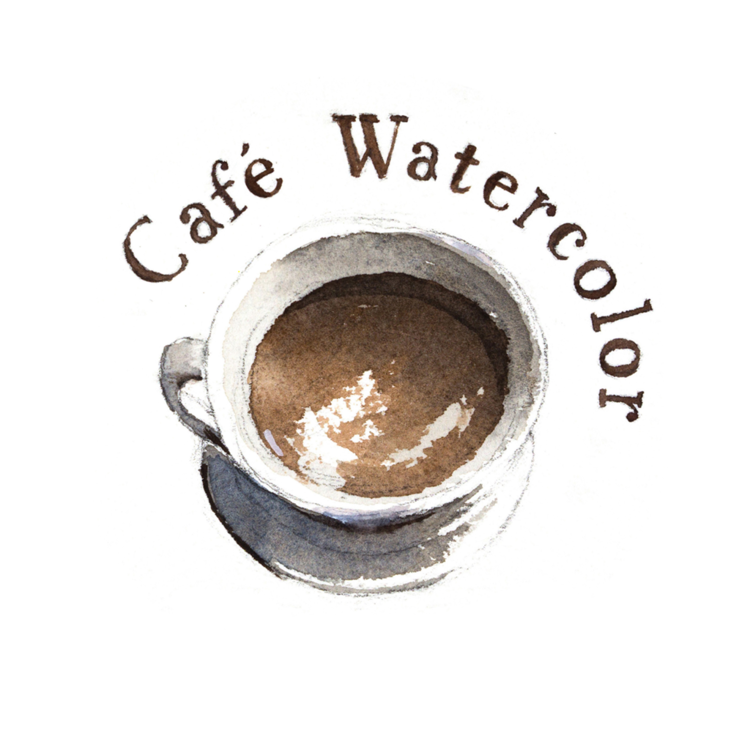I got many questions about the color that I use. And it is in my fast track watercolor pdf guide. But then some people also ask me exactly what colors that I used to mix a specific color. And that’s not something I can answer because I mix the color with my eyes, not formulas.
Read MoreFundamental
Create depth in a painting with 3 basic elements
To create a believable space in a painting, you need to create depth. But how do we do that when we are painting on a flat piece of paper? I’m sure you already know how because you’re looking at those things every day.
Recently I went to Cannon Beach in Oregon. It’s the first time I was there. Even though I’ve seen countless photos of the place, seeing it in person was an amazing experience. I took some photos of the scenery. Even though I think I can never do it justice, I still want to give it a try painting it. The most distinct element in this scene is the depth. So I thought it is appropriate for me to talk about creating depth in a painting. Now, when trying to paint a believable scenery painting, creating depth is very important. Doesn’t matter it is a cityscape, nature landscape, or even still life. Some subjects can feel more obvious than others. But the concepts apply to pretty much all of them.
So today I’m going to share with you how to work with the 3 basic elements to create depth in painting. These elements are not just for watercolor, they are basic principles for every painting. Most of the time the depth is created by at least 2 of these elements. And in the case of this scene, all 3 applied.
Value and contrast - If a scene doesn’t have a direct light source, such as an overcast day. You can see it very clear that things are much lighter and lower in contrast in a distance than they are up close. That’s because there is a lot more atmosphere in between covered them up. This is most obvious during a foggy morning. Even on a sunny day. Things that are further away are going to have less contrast than what’s up close. Because the light on the atmosphere will make the dark in the distance appears to be lighter.
Color - Similar to value and contrast, things that are further away are much less saturated. Because the colors we see are made of light. The further things are away from you, the longer distance light has to travel to reach your eyes. Some of the colors of light got absorbed into the atmosphere. During a sunny day, the color blue got to absorb the most by the atmosphere, that’s why the sky is blue and things that are further away are bluer. The color red can travel longer distances than blue, that’s why at sunrise and sunset, when the sun is further away from us, we see mostly red and orange. And by the way, this is why we should try to eliminate blue light at night because our body associates blue light to daytime, it will suppress your body produce melatonin, makes it harder to relax and go to sleep. A simple way to remember is that things that are further away, have closer overall color to the sky.
Sharpness - Our eye has a visual range, Even if you have 20/20 perfect eyesight, you are not able to see things that are a mile away as clearly as they are 5 feet close to you. Unless you are an eagle that has about 2 miles of visual range and can see UV colors. Things will look more blurry, with less detail in a distance. Adding the variant of less saturated color and contrast into the mix, you will be able to make things look very far away.
All these elements are what you can see in the real world because of the atmosphere. So next time when you are outside, take some time to observe. And what’s important is to understand them, and push them in your painting. Remember, we are creating optical illusions on a flat surface, so dial those elements up a bit to create better depth. Creating a believable depth is to helps the viewer to experience the scenery you see. So keep these 3 elements in mind to share your experience visually.
Perspective for watercolor - what you need to know
Throughout my artistic study and journey. Perspective has always been a subject that I’m not comfortable with. Because it’s almost like math. It feels dead and too binary. And when you are doing it wrong? Someone will call you out. But what do you really need to know about perspective and how does it fit into a watercolor painting? Let’s put things in “perspective” today.
Read More3 Ways to become a better artist FOR FREE!
Last time we talked about why some of the most common question on the internet is actually not the most important ones. And why things like materials and technique won’t make you a better artist. If you haven’t watch that one I strongly suggest you go back and watch that one first. Today, I’m going to continue that topic and share with you what should you be doing to become a better artist. And the best thing about it is that it is completely free and you can do it right now!

